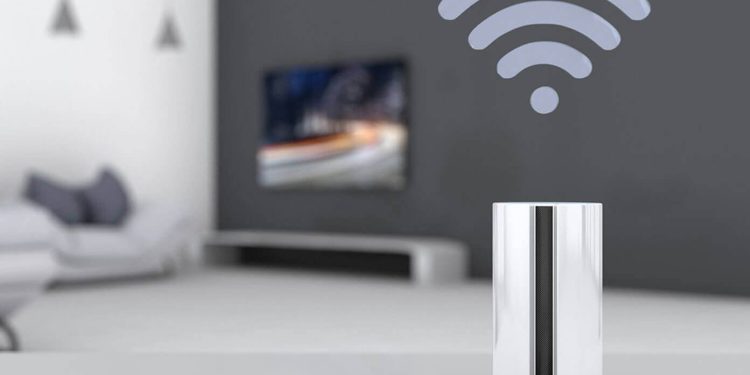A smart home is a concept that envisions a fully connected household environment that provides its residents with an unprecedented level of comfort and control. The previous generation of smart homes had little to do with ‘smart devices’ and was more about automation and remote-controlled devices. Today, IoT has entirely changed the concept of smart homes for the world. Using devices, sensors, appliances, and the whole spaces in houses, data is constantly collected on how the devices and appliances are used. These data-generated insights are used to study habits and patterns, which then help personalize the user experience.
[Also Read: How 5G will Impact IoT?]
For example, thermostats like Ecobee or Nest use IoT to adjust regimes to your routines automatically. They can detect your presence and automatically adjusts the temperature for comfort when you’re home and reduced energy use when you’re away– without you even having to lift a finger. What’s more? They help you save money and energy too!
Around two-thirds of homeowners are likely to purchase smart home IoT devices in 2021. If you, too, want to make your home smart using connected devices, here are some things to consider.
Benefits of IoT for smart homes
This collaboration of IoT with home automation has proved to be a great boon for everyone. Thanks to smart home IoT solutions, we have an unprecedented level of control over our household. Below are some of the main benefits homeowners can enjoy with IoT-connected homes.
Cost-efficiency
Setting up IoT-powered smart homes may be costly at first, but they help you save electricity and reduce power and water bills in the long run.
More control over your home
IoT in smart homes allows users to control various gadgets and systems of their homes using a mobile phone application or a button.
Next-level comfort and convenience
With IoT-powered smart homes, you don’t have to move all over the home to operate different devices. To manage your entire house and devices, all you need to do is push a button or use a smart mobile application.
Data for smart insights
Connected devices collect data, process it, and then provide meaningful insights on your app’s dashboards, which can be used to control various devices and spending. For example, you can calculate spending on utilities in real-time, control how much electricity each device uses, track humidity and other air quality conditions in your space, etc.
Security
Home security is an important element of our lives. IoT has taken our home security to an entirely new level. For instance, window and door security shutters can now be integrated into smart home systems that can defer intruders while also blocking harsh weather. A popular IoT device associated with home security is a video doorbell. It can deliver a live stream to your smartphone if the sensor detects motion around it or a visitor rings your bell.
The most important benefit of IoT-connected smart homes – cutting down on your utility spending.
Smart IoT connected devices first gather insights on your electricity, gas, and water consumption. These insights can then be used to identify the waste points and adjust your usage accordingly. Besides, that smart applications are designed to optimize the use of resources. For example, smart lighting automatically turns on and off, based on the insights it gathers from your home, usage, and wastage.
By optimizing the use of resources, we don’t just reduce our spending but also decrease our carbon footprint. In other words, connected technology allows us to go green, decrease carbon emissions, and cut down on pollution.
Some Amazing use cases of IoT-powered smart homes
Smart shades
Smart shades protect homes from extreme temperatures. They prevent the escape of heat during winters and prevent hot winds from entering through the windows in summers. They even adjust to the daylight change and let just as much natural light to make the residents feel comfortable. Not just this, they also protect houses against noisy disruptions and enables privacy throughout the day.
Smart Fridge
Smart fridges are connected or networked devices that use deep learning and natural language processing (NLP). Some even have cameras inside of them. Their AI-enabled software identifies different food items and suggests recipes based on the food available. Some of the smart fridges being used in restaurants and supermarkets are connected to Karma’s app that allows them to sell surplus food, which would otherwise be thrown away.
Smart bathrooms
Through embedded sensors and Internet-connected apps often paired with voice commands, smart bathrooms can automate several bathroom functions. They allow you to control the amount of water you are using, the temperature of your water and even know about the variation of temperature by varied colors just with the help of your audio command.
For example, Kohler’s KOHLER Konnect app can prevent water wastage, control lighting, music, and shower duration.
Smart thermostat
Smart thermostats automatically adjust the house temperature according to the outside temperature. They even notify you when your furnace or AC needs any repair before it goes out of your control. They are energy efficient and help you cut down on electricity bills too.
These are only a few IoT applications that are commonly used for making homes smart. But, the list doesn’t end here; there are so many more IoT devices and applications for smart homes around you. For many IoT applications, it’s relatively early days, but the trend is clear: IoT applications are poised to grow and become more diverse.







